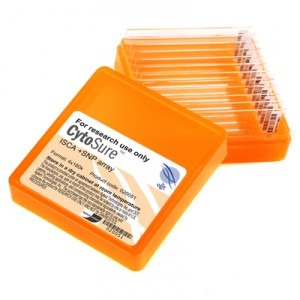
OGT has released a new microarray for high coverage analysis of disease-causing genomic variation
The new patent pending CytoSure ISCA +SNP (4x180k) array combines array comparative genomic hybridisation (aCGH) probes, endorsed by the International Standards for Cytogenomic Arrays (ISCA) Consortium, with fully validated single nucleotide polymorphism (SNP) content.
This allows the accurate and cost-effective detection of copy number changes and loss of heterozygosity (LOH) using a single array.
As the newest member of the CytoSure ISCA array portfolio, the CytoSure ISCA +SNP array includes enhanced SNP coverage for high-resolution LOH detection.
James Clough, Vice President Clinical and Genomic Solutions at OGT, commented: "For several years, OGT has worked closely with ISCA to design a range of arrays focused on providing standardised, evidence-based content".
Although aCGH is the gold standard for detecting copy number variation (CNV), until recently it was not possible to combine this technique with LOH and uniparental disomy (UPD) detection using SNP probes.
This meant that either two separate arrays were needed, or that inferior SNP-based CNV detection platforms were used.
To solve this problem, the CytoSure ISCA +SNP array allows CNV and SNP detection to be carried out on a single array, using optimised probes that are fit for each purpose.
By allowing both methods to work efficiently under standard CytoSure aCGH hybridisation conditions, these arrays fit into existing workflows.
To provide as much relevant information as possible, the arrays include content specifically designed to focus on disease and syndrome-associated regions, in addition to offering whole genome 'backbone' coverage.
To simplify the analysis of samples such as those suspected of exhibiting UPD, OGT provides all users of CytoSure arrays with its industry-leading CytoSure Interpret Software.
With various innovative features, the software maximises the ease, consistency and speed of data interpretation, while minimising the need for user intervention.
The results provided include annotation tracks covering syndromes, genes, exons, CNVs and recombination hotspots, while links to publicly available databases put results into context.




